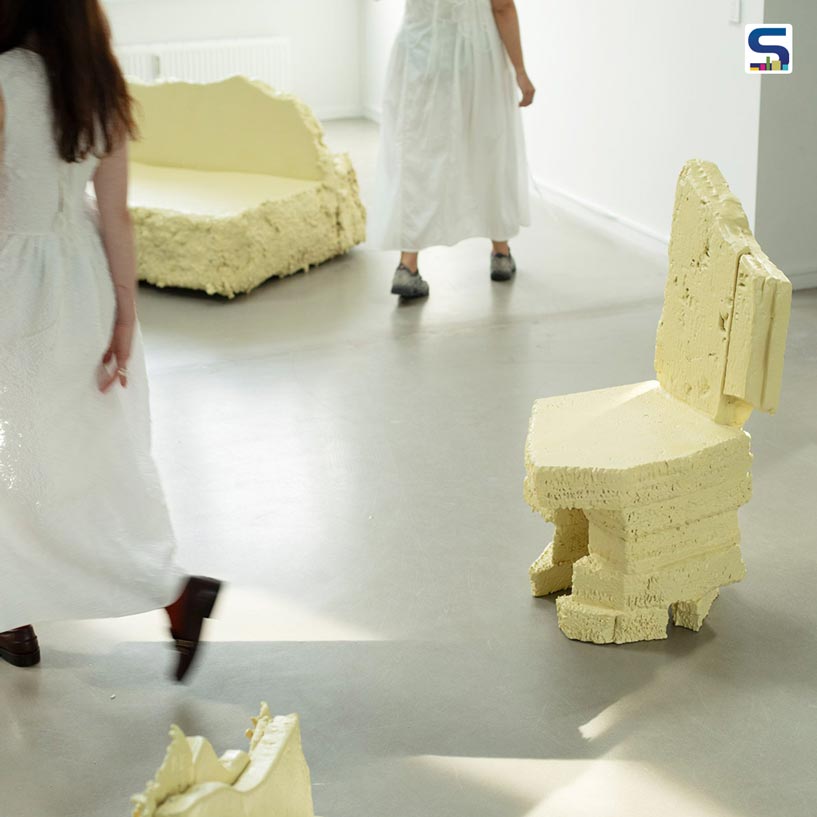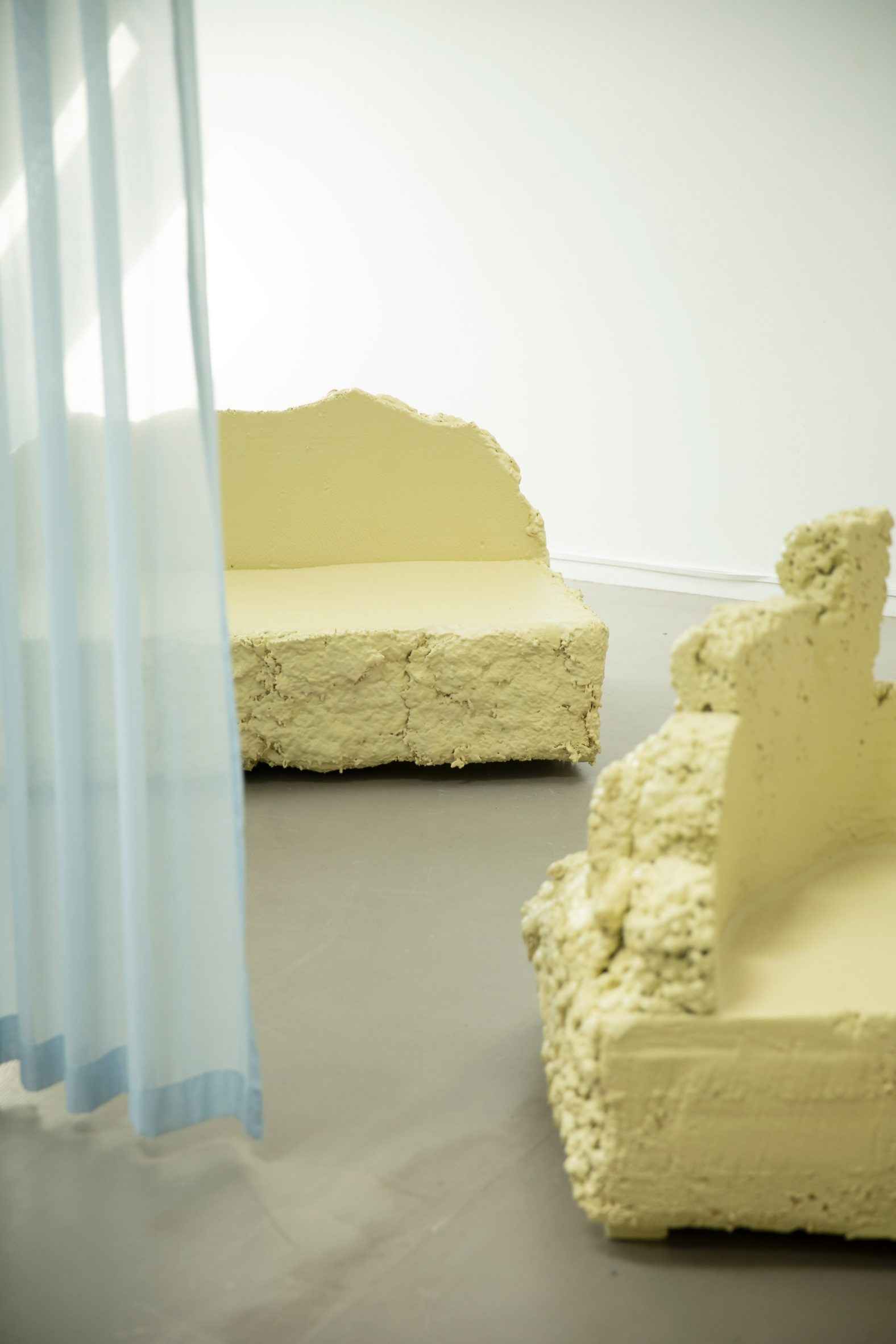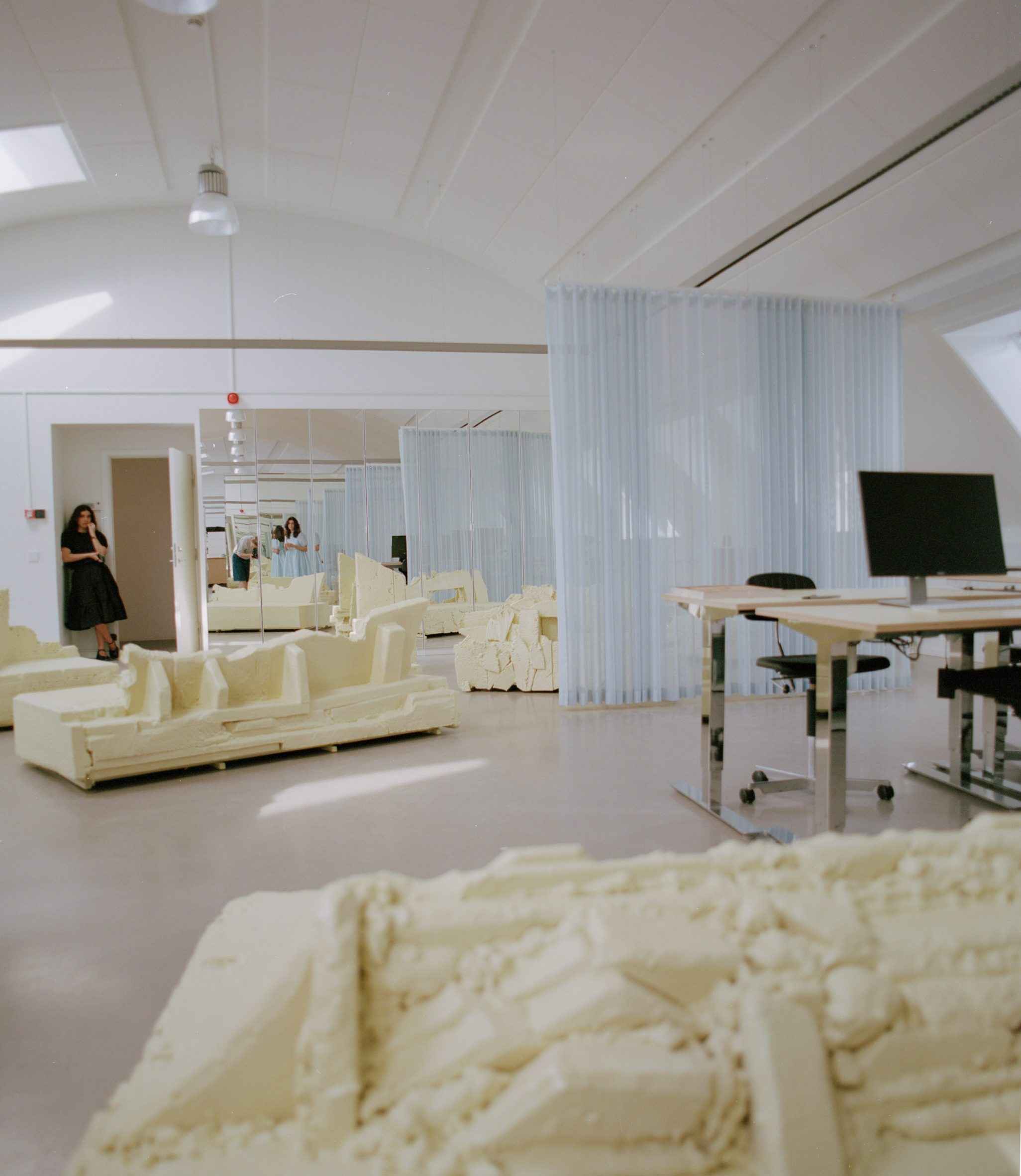
During the recent 3 Days of Design event in Copenhagen, Mallorca-based designer Sara Regal presented an innovative collection of seating created entirely from construction debris and leftover building materials. Her work was featured at fashion designer Cecilie Bahnsen’s showroom as part of a special two-day installation titled Residue: Soft Remains, curated to highlight the creative potential of discarded matter. Know more about how intersections between design disciplines and the shared commitment to rethinking waste in creative and environmentally conscious ways are growing on SURFACES REPORTER (SR).

The project brought together six modular sculptural seats, each uniquely shaped and assembled from a mix of synthetic and natural waste.
From debris to design
The project brought together six modular sculptural seats, each uniquely shaped and assembled from a mix of synthetic and natural waste. Regal explained that the designs extend her ongoing exploration into how waste materials can be reimagined within contemporary design. In her earlier projects, she would deconstruct building waste, breaking it down and transforming it into entirely new substances that could be reworked into objects. However, for this installation, she shifted her focus. Rather than dismantling the scraps, she embraced their existing form and scale, choosing instead to treat them in a more constructivist manner. This change allowed her to directly incorporate the raw, irregular qualities of the discarded pieces into the seating structures.
The seats themselves were formed from a combination of materials Regal salvaged from building sites around Mallorca, where she sources most of her raw material. These included synthetic waste products such as polyester and insulation foams, alongside natural remnants like cork, wooden planks, and other timber offcuts. Each item determined the eventual appearance of the furniture including its dimensions, contours and layering depended on what she discovered during her collection process.

Regal explained that the designs extend her ongoing exploration into how waste materials can be reimagined within contemporary design.
Turning trash into texture
For Regal, the project was as much about aesthetics as it was about sustainability. She wanted to reveal the hidden beauty within what is commonly dismissed as trash. By experimenting with textures, layering techniques and the interplay of synthetic and organic fragments, she sought to elevate the scraps into striking, sculptural forms. According to her, for construction companies, such materials often represent nothing more than a cost, since they typically have to pay for disposal or, at best, send small amounts for recycling. By reclaiming these discards, Regal both diverted them from the waste system and transformed them into functional, visually compelling pieces.
The six seats varied widely, reflecting the diversity of the scraps from which they were made. Regal likened one of them to a layered cake, explaining that it contained a bit of everything inside. This metaphor highlighted the collage-like nature of her process, in which different fragments were stacked and interwoven to create a textured, organic composition. The pieces were finished with a protective polyester coating, while some incorporated larger, irregular polyester fragments as defining structural elements.

She wanted to reveal the hidden beauty within what is commonly dismissed as trash.
Though conceived as individual works for this particular exhibition, Regal envisions the potential for future development. For her, her practice is not as a linear evolution but as a series of experiments, with each project adding another approach to her vocabulary of working with waste. The Residue: Soft Remains seats could be extended into an entire modular system sharing the same textures, or the technique could be adapted to other forms, such as tables or additional furniture types. The exhibition was organized by Carmen Riestra, founder of Spain’s Vasto Gallery, together with Maria Banos of Art Studies, and hosted in collaboration with Cecilie Bahnsen.
Image credit: Tine Bek